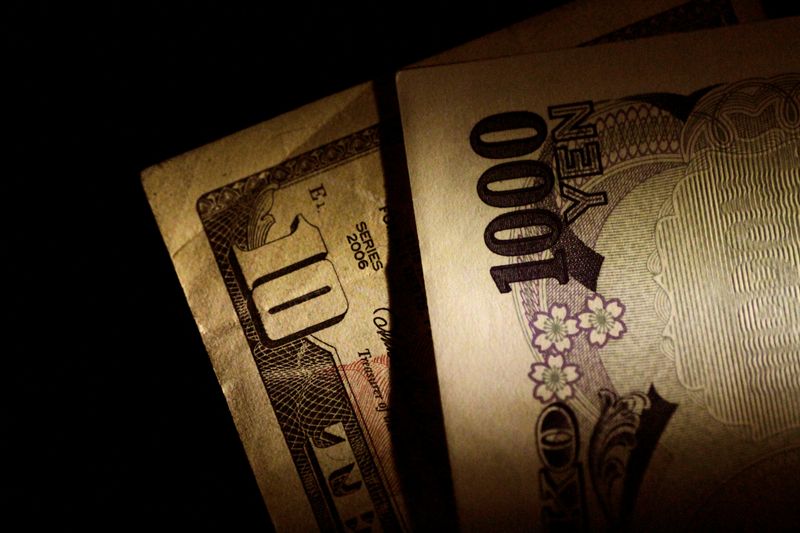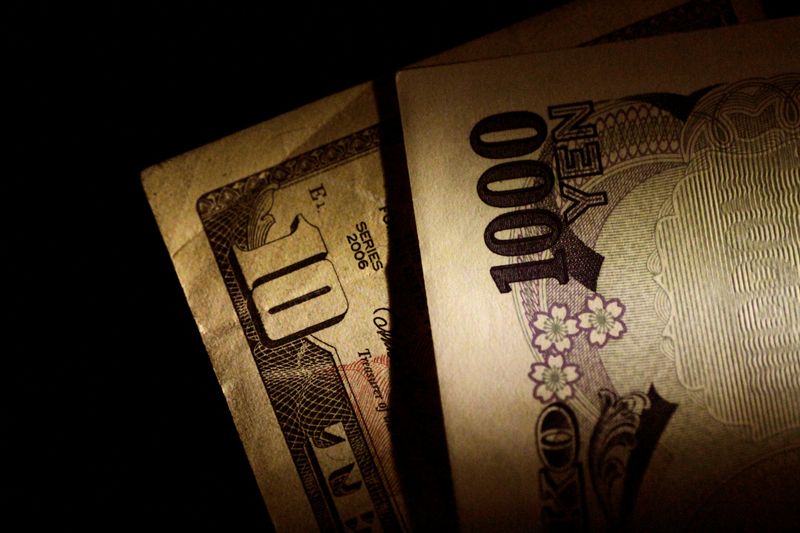
By Gertrude Chavez-Dreyfuss
NEW YORK (Reuters) -The U.S. dollar drifted lower against most currencies on Thursday, pressured by softening data in the world’s largest economy that backs expectations the Federal Reserve will start cutting interest rates this year.
The yen edged up from a 38-year low against the greenback following the U.S. numbers, even as traders remained on high alert for any signs of Japanese intervention to prop up the currency.
U.S. reports showed that jobless claims for state unemployment benefits dropped to 233,000 for the week ended June 22. However, the number of people receiving benefits after an initial week of aid increased 18,000 to 1.839 million during the week ending June 15.
At the same time, new orders for key U.S.-manufactured capital goods unexpectedly fell in May, suggesting business spending on equipment weakened in the second quarter.
Non-defense capital goods orders excluding aircraft dropped 0.6% last month, the data showed. Economists polled by Reuters had forecast core capital goods orders edging up 0.1%.
More data showed that economic growth moderated sharply in the first quarter. Gross domestic product increased at a slightly upwardly revised 1.4% annualized rate last quarter, but down from the 3.4% registered in last three months of 2023.
The GDP report also showed weak consumer spending. U.S. consumption growth was revised down to 1.5%, from the previous estimate of 2%.
“It seems markets are focusing more on the personal consumption miss than anything else, definitely would constitute a sign of a slowdown in the U.S. economy,” said Helen Given, FX trader at Monex USA in Washington.
“Q1 GDP below the red hot readings is something to be expected, but such a downgrade in consumption shows there might be a further slowdown coming.”
YEN WOES
In afternoon trading, the yen was slightly up against the greenback at 160.765 per dollar, having fallen to a low of 160.88 on Wednesday, its weakest since December 1986.
The Japanese currency has fallen about 2.1% this month and 12% so far year against a resilient dollar, as it continues to be hammered by wide interest rate differentials between the U.S. and Japan. That has encouraged investors to use the yen as a funding currency for carry trades.
In a carry trade, an investor borrows in a currency with low interest rates and invests the proceeds in higher-yielding assets.
Still, the yen’s latest slide past the key 160 per dollar level has kept traders nervous over possible intervention from Tokyo, after authorities spent 9.79 trillion yen ($60.94 billion) at the end of April and early May to push the yen up 5% from its then 34-year low of 160.245.
Analysts said while the risk of intervention has increased, Japanese authorities could be holding out for Friday’s release of the U.S. personal consumption expenditures (PCE) price index before entering the market. Still, any intervention would likely have a limited effect, they said.
“The Bank of Japan has been known to act on Friday, but its best case scenario…would be a material slowdown in U.S. inflation to further support calls for a Federal Reserve rate cut this year,” said Michael Boutros, senior FX analyst at Forex.com.
Elsewhere, sterling rose 0.2% to $1.2643 while the euro rose 0.2% to $1.0704.
The euro is on track to lose roughly 1.4% this month, weighed down by political turmoil in the euro zone ahead of France’s snap election set to begin this weekend.
The dollar index slipped 0.1% to 105.91, not far from a nearly two-month high of 106.13 on Wednesday.
The U.S. currency’s losses overall were limited, however, by comments from Atlanta Fed President Raphael Bostic, a voter at the Federal Open Market Committee (FOMC) this year.
In an essay released on Thursday, Bostic said as things stand, “I continue to believe conditions will likely call for a cut in the federal funds rate in the fourth quarter of this year.”

In other developments, Wednesday was the last day that investors could trade currencies for the quarter, given that spot foreign exchange settlement takes two business days.
Trading of U.S. stocks moved to a shorter settlement cycle last month, known as T+1.
This post is originally published on INVESTING.



